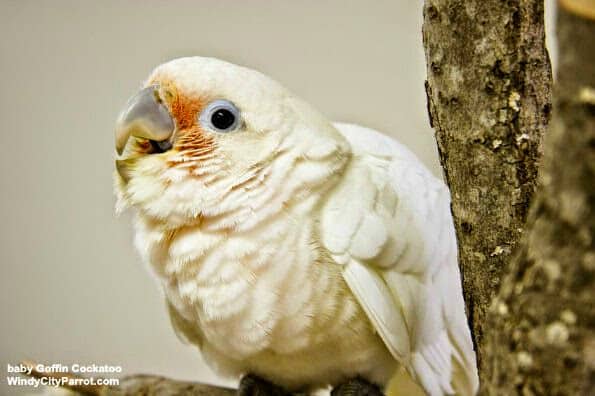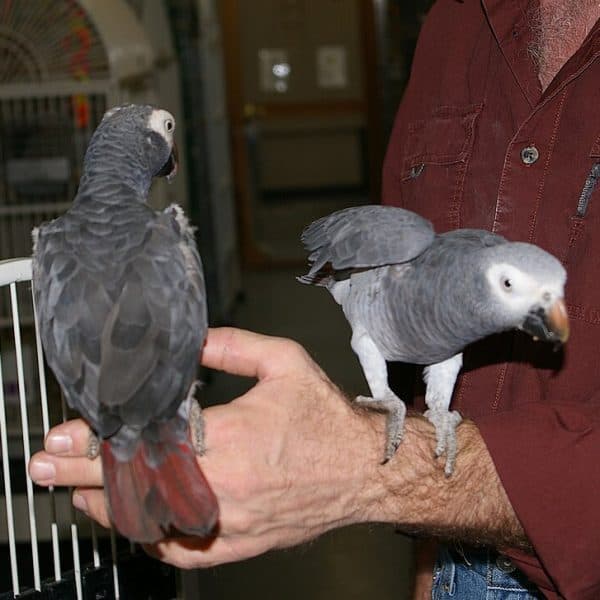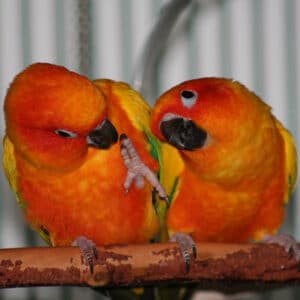Last Updated on by Mitch Rezman
Bonnie D. wrote:
I have a question for you.
The reason for my switching to Hagen Alternative Formula was because it had no soy or corn.
But I noticed that it has peanuts in it.
I was always told by my vets that the greys shouldn’t have peanuts (or too many) because it decreased the calcium in their bones.
What is your take on that?
My birds took well to the new food initially but now Bozo, my Goffin ‘too, has scattered it all over his cage bottom.
I think that he does eat some of it and he goes into my sun conure’s cage and eats hers so he is not starving!
The rest like it – maybe it is the peanuts.
Anyway, I will take the 20lb bag, and if there are problems I will go back to the regular lifetime granules.
Bonnie D.
Catherine wrote:
Dear Bonnie
Okay, when Hagen gets in today, I will pull the bag and process the order.
No bird will eat everything and just like the rest of us, once you buy a larger package of something, it ends up being not as interesting and not always used as well as it did in the beginning.
Such is life.
Peanuts.
I have read so many conflicts.
No one food of any kind is perfect for any of the creatures on this earth, including us.
We have to make choices and judge that what we select is right.
Moderation and variety are best in all things.
Harrisons pellets are widely touted but are heavy in Sunflower seeds, many birds do just fine on them. We can only try and trust that these companies are trying their best for our birds.
I hope this helps.
Thank you
MitchR chiming in:
Your veterinarian brings up an interesting point regarding peanuts and calcium deficiencies.
Veterinarians like to point their fingers at bird food ingredients like sunflower, peanuts, and millet which they claim to be direct triggers of fatty liver condition which removes estrogens from the blood.
This manifests itself as a calcium-deficient diet.
Fatty liver disease is caused by birds being FAT.
This is a classic case of correlation implies causation by your veterinarian but is not necessarily true.
Regardless of your bird’s diet, like humans, if your bird is not flighted and gets no exercise he or she (hope you know) is susceptible to fatty liver disease.
In the video below we show our ringneck on our cockatiel’s cage.
Keto (the ringneck) had to fly from his cage to get his upper-level snack.
Conversely, Barney (the tiel) whose clipped wings grew back in about four minutes (30 days actually) is not intimidated by the larger bird but will take flight to spend time closer to me.
Chili our Quaker had his wings clipped so severely he saw no lift.
We’ve had him about four months and he’s finally starting to molt the old clipped wings and we are seeing new growth.
My point is we try to keep all the birds active by encouraging them to fly which burns a whole lot of calories.
Author Profile
Latest entries
 The Traveling BirdJune 26, 2025Can You Name 5 Parrot Species That Are Living Wild in the USA?
The Traveling BirdJune 26, 2025Can You Name 5 Parrot Species That Are Living Wild in the USA? Bird BehaviorJune 26, 2025How is it Parrots Are Problem Solvers Social Animals and Even Use Tools?
Bird BehaviorJune 26, 2025How is it Parrots Are Problem Solvers Social Animals and Even Use Tools? Bird & Parrot AnatomyJune 25, 2025How a Tiny Chemical Modification Makes Parrots Nature’s Living Paintings
Bird & Parrot AnatomyJune 25, 2025How a Tiny Chemical Modification Makes Parrots Nature’s Living Paintings PigeonsJune 20, 2025How Do Parrots Thrive in Cities Outside Their Native Habitats?
PigeonsJune 20, 2025How Do Parrots Thrive in Cities Outside Their Native Habitats?




